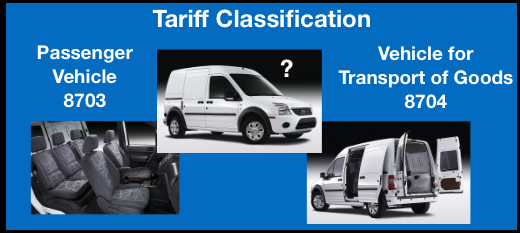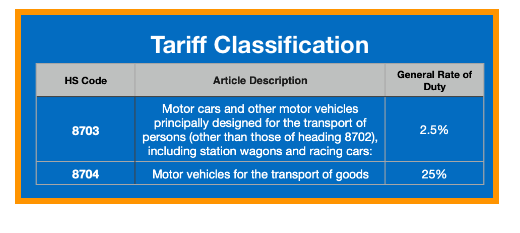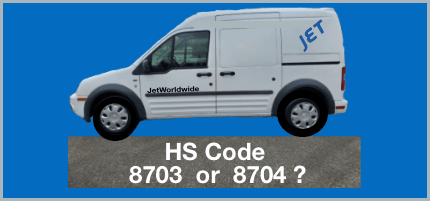
Ford Transit: Case Study for Tariff Classification
What if a company imported a product in a way that that qualified it for a low import tariff? And then made changes to the product immediately following import. Changes that, if imported that way, would have resulted in a much higher duty? Well that is exactly what Ford Motor company did.
Some Background:
Ford Transit Connect vans were importing from Turkey via the Port of Baltimore. The product mix includes various models. The Connect XL Van and XLT Van were importing with characteristics of passenger vehicles. As such, heading 8703 would apply. The vehicles included passengers seats and side window.
However, immediately following import, some models were converted for cargo use. US customs learned that some Ford Transit Connect vans entering via 8703 were converted for cargo use immediately after importation.
- Were the vehicles primarily for passengers or for the transport of goods?
- If for the transport of goods, the code 8704 would apply.
- The general rate of duty for 8704 is ten times higher than HS code 8703
From: https://rulings.cbp.gov/ruling/H22085
"Immediately after release by CBP, Ford has the rear seating and associated safety restraints removed from the “S6” models identified above, and the rear seating, rear seat belts and the rear passenger windows removed from the “S7” models, in a warehouse on the marine terminal......."

 Expand your cross border transportation and logistics options.
Expand your cross border transportation and logistics options.
Grow your understanding of cross border shipping from a company providing logistics solutions for over 40 years! Strengthening your transportation team - even if you are a team of one!
Gain from a discussion with our seasoned professionals. Contact our team for an initial consultation.
Ford Motor Company Agreed to Pay $365M for "misclassified and under-valued vehicles." The settlement is among the largest customs penalties in recent history.
“Importers have an obligation to truthfully declare the nature of their products and pay the duties that are owed,” said Principal Deputy Assistant Attorney General Brian M. Boynton, head of the Justice Department’s Civil Division.
This case also brings up the issue about modifying an item following import. In this instance, the product's modifications were done immediately following import. But what if it was done months later? Or done without the importers knowledge? The principal use is the one that "exceeds any other use."
Pertinent factors CBP uses in determining classification include:
- The physical characteristics of the merchandise
- The expectation of the ultimate purchasers
- The channels of trade of the merchandise
- The environment of sale
- Use in the same manner as merchandise which defines the class
- The economic practicality of so using the import
- Recognition in the trade of this use
Lesson number 1 in HS classification: Essential Character
The concept of essential character in HS classification plays a crucial role in determining the correct duty rate for imported goods. This case highlights the importance of considering the true nature and intended use of the goods when determining classification.
This case is particularly interesting for Jet's team. Not only does it involve HS classification but also includes vehicles from our past.

Useful information regarding HS code and tariff classification.
Getting Logistics Worldwide Support
Jet Worldwide provides best in class logistics consulting. Most often, it is simply support for our customers shipping internationally. It also includes consulting either for a specific project for general over all support.Benefit from our unique mix of expertise, industry contacts and discount access to global carriers.





